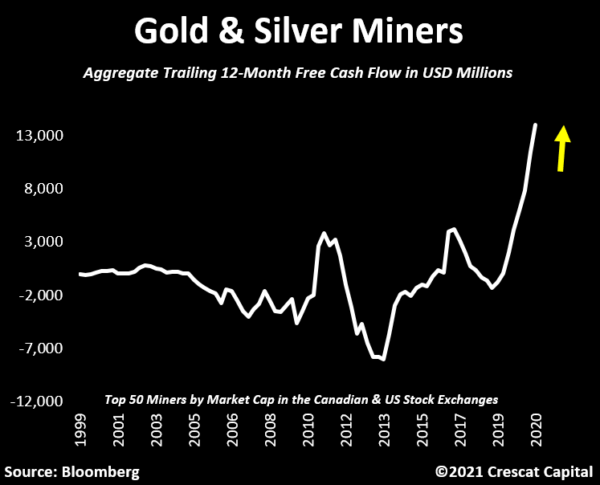
It’s The Roaring ’20s Again – Begin To Prepare For The Same Ending
I have read many articles over the years, and it seems that the manner in which the market has acted has caused many to confidently view market declines over the last 12 years as short-term opportunities to make long-term investments in a generally rising market. What I find most interesting about this commonly held perspective is that it presumes a linear expectation for a continuation in a long-term rising market.
Now, most of you that read my analysis know that I have been a staunch bull, especially after we struck my long-term pullback target in the 2200SPX region last year. In fact, my ideal target for this bull market which began in 2009 is in the 6000SPX region.
But, what if we are approaching a point in history where that very long-term bull market finally ends?
In this article, I am going to be using a point of reference that goes back 100 years in history. And, since there really is no one left from that generation that is still alive, it is quite clear that we do not have a personal frame of reference from which we can relate to the “Roaring Twenties” of the 1920s. So, can we be doomed to repeat it?
Very few people reading this article even know what we are referring to when we bring up the “Roaring Twenties,” and even less understand the implications.
So, let’s learn a little history.
In 1918, the Spanish Flu was spreading around the globe and affected 20-40% of the world’s population. In fact, it claimed the lives of over 50 million people globally. The US alone lost approximately 675,000 lives to the Spanish Flu. As it abated, the US then moved into the “Roaring Twenties.”
The “Roaring Twenties” refers to the decade of the 1920s, which was a period of tremendous economic prosperity. During this period, we saw tremendous technological advancements, including the use of automobiles, telephones, moving pictures, radio, aviation and electronic appliances.
It was also a time where the United States experienced a stock market boom. In fact, the stock market quadrupled from 1920 until 1929.
As we were approaching 1929, many were quite certain that the United States entered a “new paradigm” of economic prosperity. Allow me to present to you what our financial leaders back in the 1920s said about our markets. For those that know their stock market history, you would know that those “in the know” were absolutely certain about the impossibility of a market crash right before the market crashed and led us into the Great Depression. Let me show you a few examples:
We will not have any more crashes in our time.
This was said by John Maynard Keynes in 1927, two years before the stock market crash which led to the Great Depression.
Stock prices have reached what looks like a permanently high plateau. I do not feel there will be soon if ever a 50 or 60 point break from present levels, such as they have predicted. I expect to see the stock market a good deal higher within a few months.
This was said on October 17, 1929, a few weeks before the Great Crash, by Dr. Irving Fisher, Professor of Economics at Yale University. Dr. Fisher was one of the leading US economists of his time. cannot help but raise a dissenting voice to statements that we are living in a fool’s paradise, and that prosperity in this country must necessarily diminish and recede in the near future.
– E. H. H. Simmons, President, New York Stock Exchange, January 12, 1928
There will be no interruption of our permanent prosperity.
– Myron E. Forbes, President, Pierce Arrow Motor Car Co., January 12, 1928
The future’s so bright I need shades=one could make a case that the economic boom is JUST BEGINNING!!
[Is there any need to state that I don’t agree with this?–I am just the messenger…pls. do not shoot]
The Coming Economic Boom and What It Means for StocksBy: Kevin Matras
May 22, 2021 |
Inflation Scare Redux
But inflation concerns are back once again, and with it, fears of higher rates.
Really? How many times does the Fed have to say they plan on keeping rates near zero for the foreseeable future?
Moreover, inflation, in and of itself, doesn’t slow the economy, a sharp rise in interest rates does.
So even when they do begin to raise rates, let’s say in 2024, they are essentially starting from zero. And it should be noted that over the last 50 years, there’s never been a recession (aside from last year’s pandemic-induced plunge), when the Fed Funds rate was under 4%.
And at quarter point moves (even half point moves), it would take years to get to that level.
Bullish Indicator
It’s a rare occurrence to see 95% of those stocks get above their 200-day moving average. So rare that’s it’s only happened three times since 2003. But when it did, the S&P climbed even higher and finished with gains 6 months later and 12 months later.
Moreover, Keith Lerner, chief market strategist for Trust Advisory Services, notes that 90% of the S&P 500 stocks crossed above their 50-day moving average back then as well.
He goes on to say that in the last 15 times that has happened, the market was higher in 14 of those 15 times 12 months later. And the average annual gain was more than 16%.
Granted, this usually takes place after a correction. And we’re up more than 91% from the pandemic lows last year.
But much of that gain was making up for lost ground.
And with forecasts for soaring economic growth ahead, one could make a case that the economic boom is
JUST BEGINNING!!

